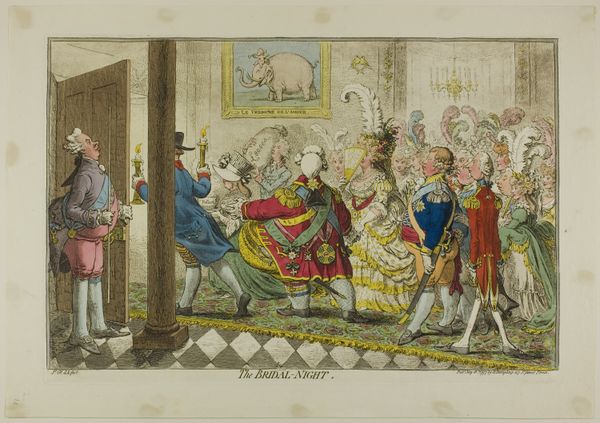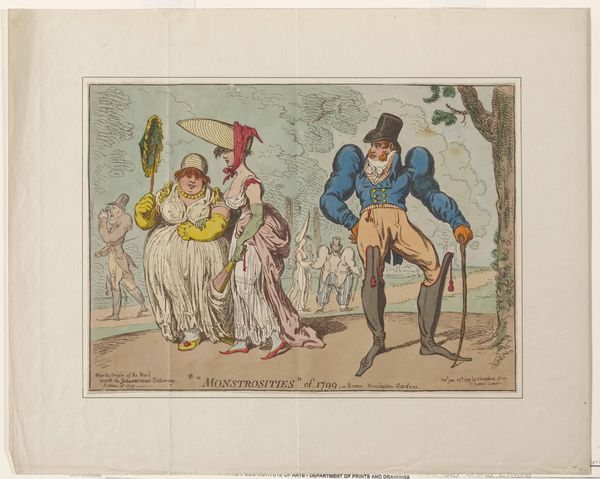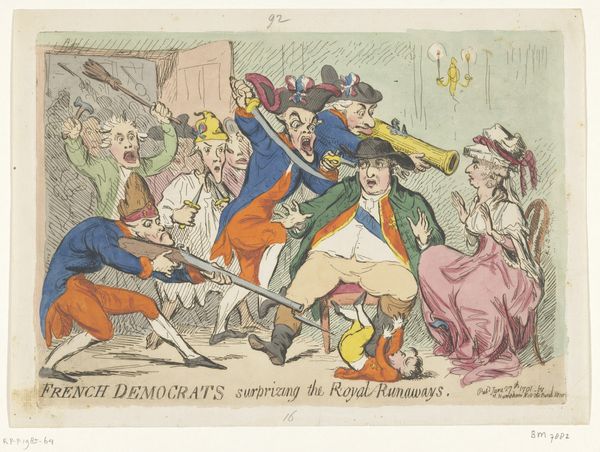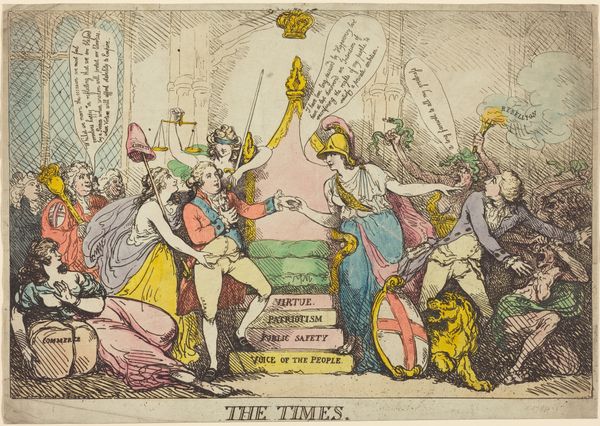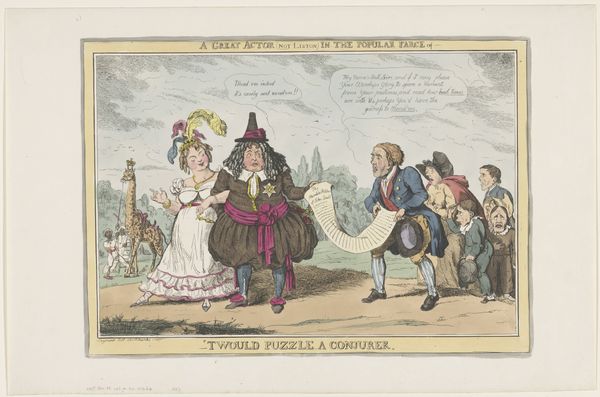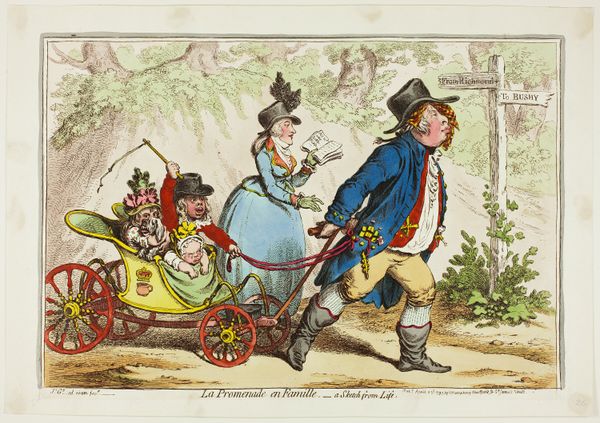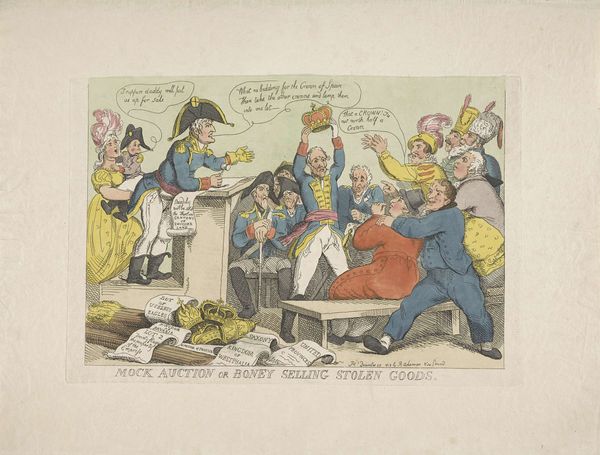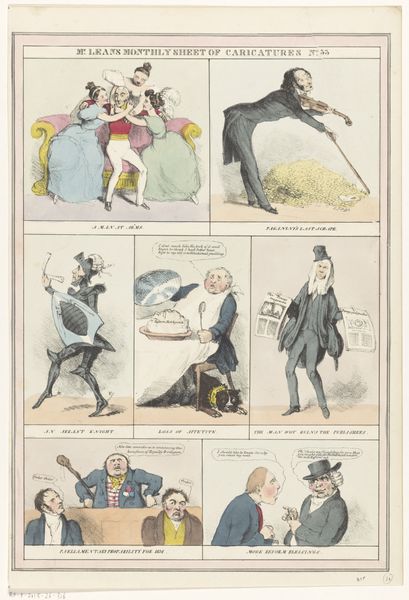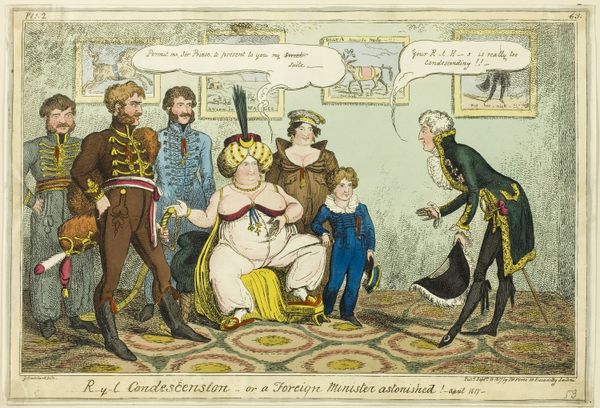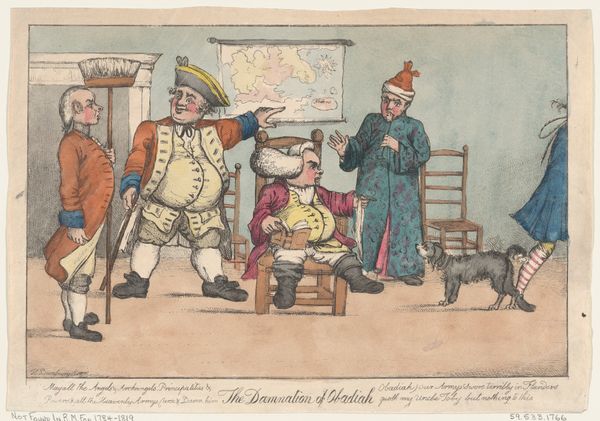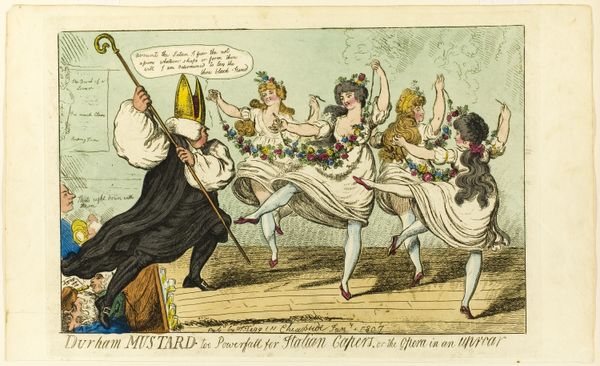
Pitt jaagt als Don Quichot Catharina de Grote schrik aan, 1791 Possibly 1791 - 1794
0:00
0:00
jamesgillray
Rijksmuseum
print, etching
#
portrait
# print
#
etching
#
caricature
#
figuration
#
history-painting
Dimensions: height 248 mm, width 398 mm
Copyright: Rijks Museum: Open Domain
Curator: James Gillray’s print, “Pitt jaagt als Don Quichot Catharina de Grote schrik aan, 1791,” now residing in the Rijksmuseum. It’s quite… spirited. My immediate impression is of chaos barely contained by the etching medium. Editor: “Spirited” feels like a rather diplomatic understatement. My initial response is of intense political anxiety visualized through scathing caricature. How can we begin to unpack all the figures presented here? Curator: Well, the composition directs us to a few key relationships. Notice how Gillray employs a very tight grouping for William Pitt atop the horse, contrasted with Catherine the Great, who is nearly collapsing under the pressure from other figures. It suggests imbalance and stress. Editor: Absolutely. But that visual stress isn't simply a formal device; it's reflective of real geopolitical tensions. Gillray directly links Pitt's policies to the subjugation of Catherine. This speaks to Britain’s, and Pitt’s role, as aggressors limiting the global reach of Russia in that moment in time. Curator: But the piece isn’t simply pro-Catherine. She’s depicted in quite an unflattering way, actually. Her corpulence is played up, and her posture is that of defeat. Gillray's caricatures frequently deployed grotesque exaggeration. It's the line quality and deliberate distortion that really drives home the satire, not necessarily any single political stance. Editor: Perhaps, but those aesthetic choices, particularly the emphasis on her physicality, are loaded with meaning. It reflects a patriarchal viewpoint of the time that equates female rulers with unchecked power and moral decay. Consider the parallels between this portrayal and other satirical depictions of powerful women in that period. Curator: Regardless of his specific motivations, Gillray’s piece offers us a lens to view the anxieties about power dynamics that shaped late 18th-century Europe. Editor: Precisely. This print does so much more than deliver a joke about a long-past political rivalry; it’s an index of period-specific and still-relevant struggles. It forces us to really consider how power impacts global and intimate interpersonal relations. Curator: A lot of information indeed to think through. Editor: Yes, many perspectives that need considering.
Comments
No comments
Be the first to comment and join the conversation on the ultimate creative platform.
